ROBERT WILLIAMS BUCHANAN (1841 - 1901)
|
ROBERT WILLIAMS BUCHANAN (1841 - 1901) |
|
|
|
|
|
|
|
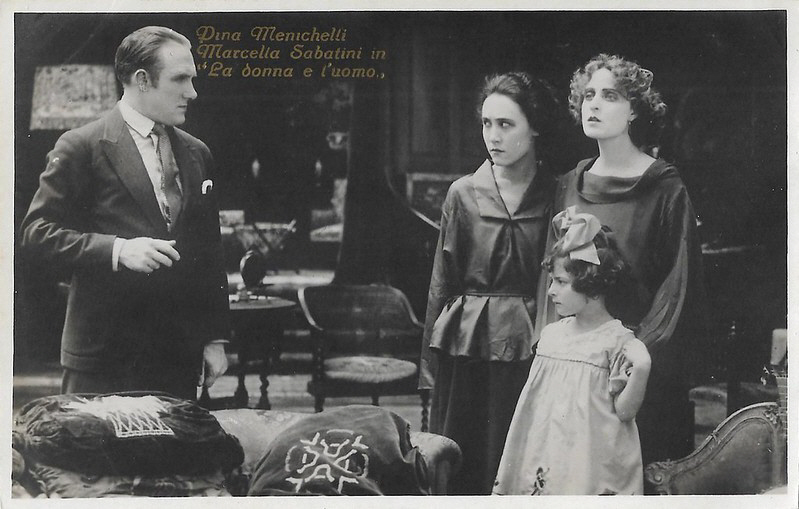 |
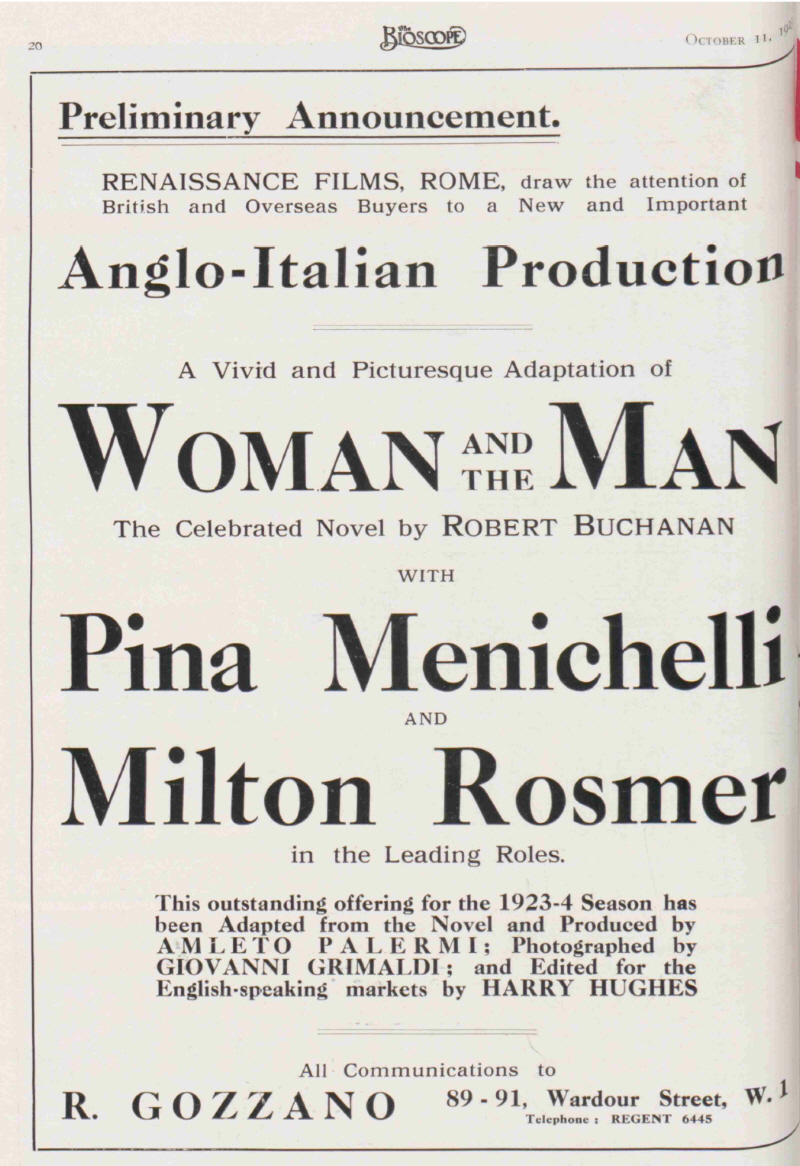 |
|
(p.38) An Anglo-Italian Achievement British and Oversea buyers will be interested in a new production which Renaissance Films, Rome, are about to offer them. Signor Amato, the managing director, has just brought over from Rome what is said to be a masterly adaptation of “Woman and the Man,” by Robert Buchanan, a story of striking interest which has as its principal locale the sinister depths of London’s Chinatown. The film is a happy blend of British and Italian effort. A British novelist’s work is interpreted by Pina Menichelli, the favourite Italian star, and Milton Rosmer, the equally popular British artist; and the scenery of both countries has been drawn upon to full effect. The two principals are supported by a capable Anglo-Italian cast. |
|||
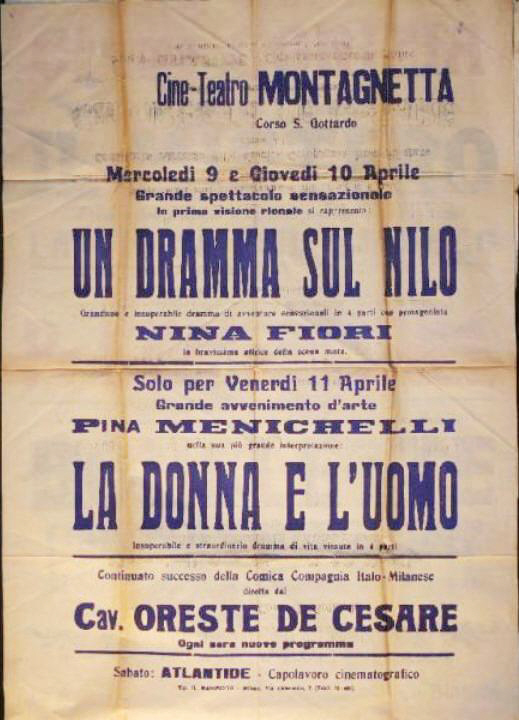 |
|||
|
[Poster for the Cine-Teatro Montagnetta - April, 1924.]
The Bioscope (24 April, 1924 - p.5) |
|||
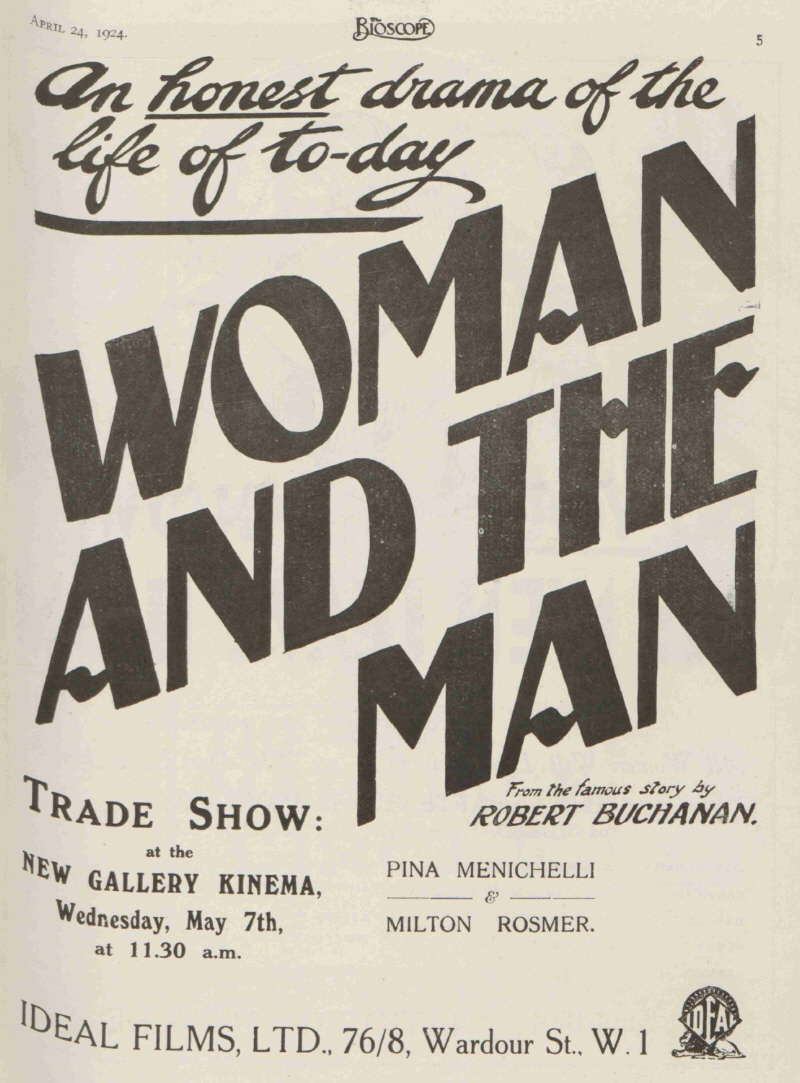 |
|
The Bioscope (30 April, 1925 - p.4) |
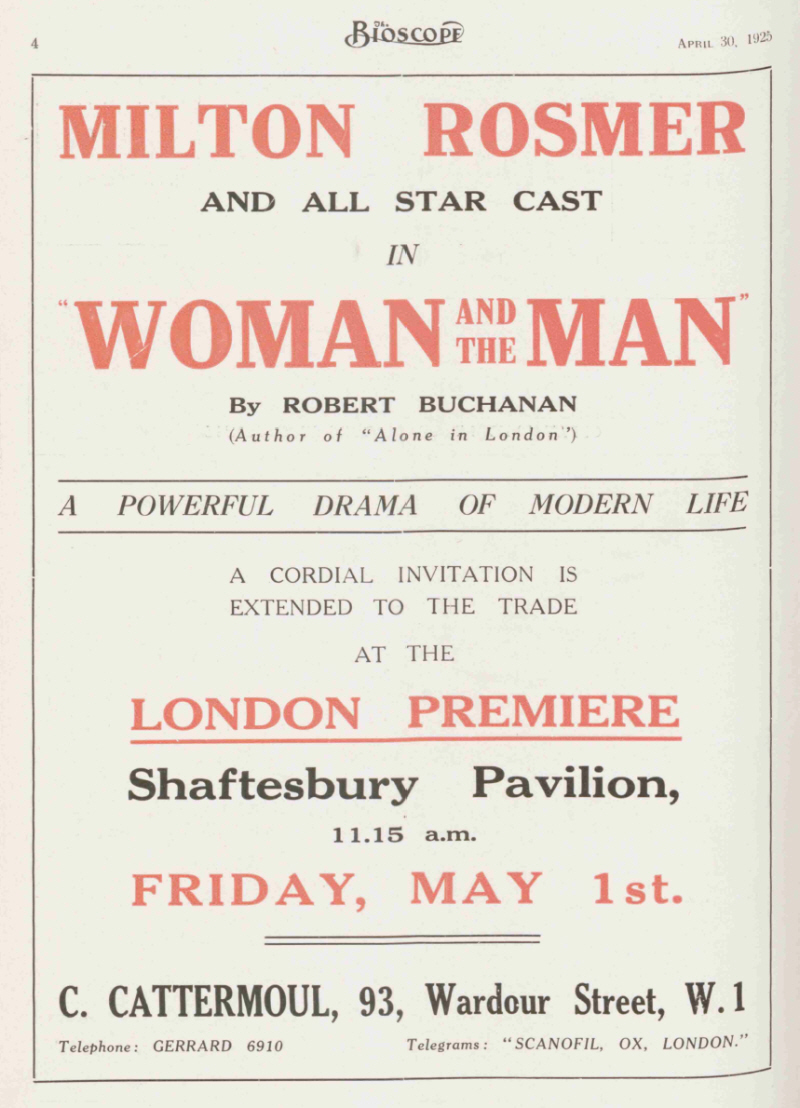 |
|
(p.32) “Woman and the Man” To the ranks of independent renters has to be added the name of C. Cattermoul, who has opened offices at 93, Wardour Street, and whose first picture, “Woman and the Man,” is due to be shown at the Shaftesbury Pavilion, on Friday, May 1st. “Woman and the Man” is an adaptation from the novel by Robert Buchanan, and portrays life with its light and shade as only Robert Buchanan can show it. Milton Rosmer makes a welcome return to the screen in this picture, and has as co-star Pina Menichelli, whose work has always delighted. The picture was made partly in England and partly in Italy. “Woman and the Man” should prove a very attractive proposition, and the first show of the new renter should certainly not be missed. ___
The Bioscope (7 May, 1925 - p.60) “WOMAN AND THE MAN” Offered by: C. Cattermoul. Length: Five reels. Type: Drama. IN BRIEF: Ill-treated and deserted by her husband, a woman’s chance of happiness is imperilled by her husband’s return. Strong melodrama, well presented. ___
Lincolnshire Echo (22 October, 1925 - p.1) |
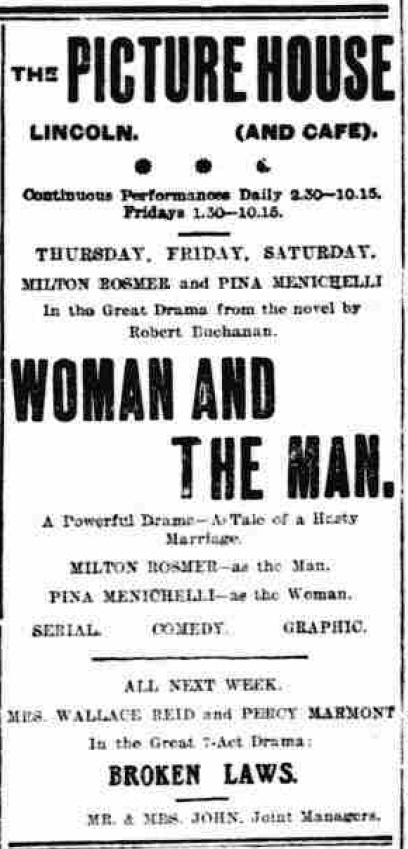 |
|
The Derby Daily Telegraph (24 October, 1925 - p.3) THE PICTURE HOUSE. Attractive programmes have been arranged for the Picture House for the forthcoming week. On Monday, Tuesday, and Wednesday the super-production, “The Stardust Trail,” will be exhibited for the first time, the film featuring Shirley Mason. This is the story of a theatrical star who weds a member of the profession, for whom a rival lays in wait. Fascinating and intimate views of life behind the scenes and the footlights form a feature in this production. Bryant Washburn plays opposite Shirley Mason, the remainder of a talented cast including Richard Tucker, Thomas Mills, and Shannon Day. For the second portion of the week Milton Rosmer and Pina Menichelli will appear in the powerful Robert Buchanan story, “Woman and the Man.” This is a tale of a hasty marriage, full of dramatic passages and pathetic human touches. It provides capital screen fare, and has the advantage of being played by such polished artists as Milton Rosmer and Pina Menichelli. Each programme will contain the usual series of up-to-date comedies and items of interest, including in the first portion of the week the first episode of the new serial, “The Mysterious Pearl,” featuring Ben Wilson and Neva Gerber. _____
Four film versions were also made of When Knights Were Bold. This play, first produced in 1906, and credited solely to ‘Charles Marlowe’ (Harriett Jay’s pseudonym), was originally a Buchanan and Jay collaboration from 1896 entitled, Good Old Times. Since Buchanan’s name was never attached to the play or the films I have not included the latter in this filmography but full details are included in the section below: When Knights Were Bold - The Films _____
|
|
|
|
|
|
|